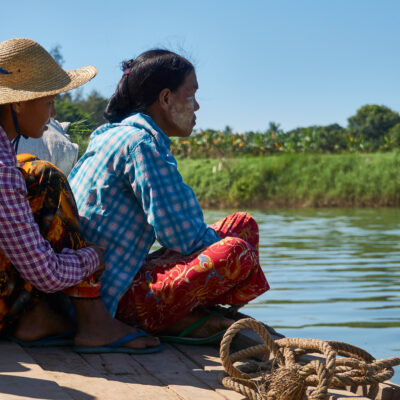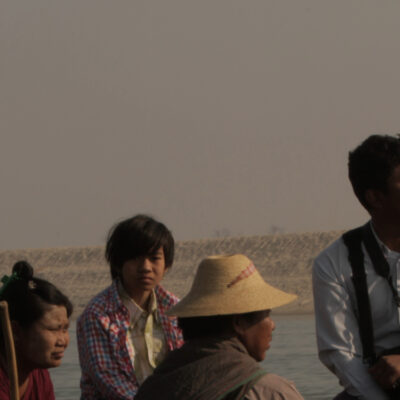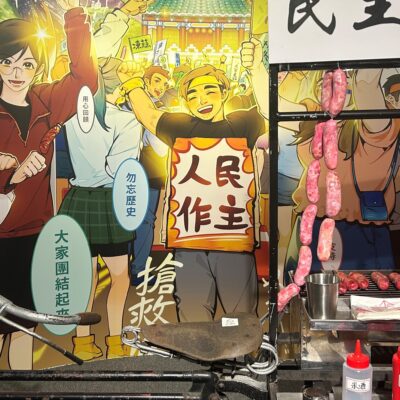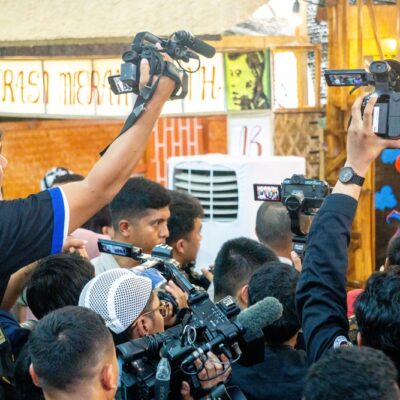The world is paying little attention to the atrocities being committed in Myanmar compared with the attention focused on the war in Ukraine and the conflict in Gaza. The low level of media freedom in Myanmar and the consequent paucity of verifiable information contribute to the relative global indifference to the crisis engulfing the country, which is precisely the outcome the military junta seeks.
Since Myanmar’s military staged a coup on 1 February 2021, it has imposed an aggressive strategy to shut down media freedom and freedom of speech. It took control of all broadcast media and began an aggressive strategy of shutting down internet and mobile connections. Protest and opposition were undermined by restrictions imposed on Facebook, Instagram, Messenger and WhatsApp. Blocking access to Facebook was particularly egregious as around half the population used it as their primary news source.
The military sought to restrict the flow of information by raiding the offices of media agencies, revoking the licenses of most independent media outlets, blocking their websites and continuing to disrupt internet access. Over 154 journalists were arrested with many subjected to torture and put on trial while many others were forced into exile. Currently, 54 journalists remain detained and Myanmar ranks 169th out of 180 countries, down from 139th in 2020, on the World Press Freedom Index. The Television and Radio Broadcasting Law was amended to include ‘other technology’ in an attempt to repress media agencies that had had their media licences revoked but were continuing to publish online.
Journalists reported that internet shutdowns slowed the flow of information, complicated fact-checking and made accessing photographs and video images almost impossible. After a few months the nightly internet shutdowns were replaced with a direction to all mobile service providers to block all websites and internet protocol addresses except for a ‘white list’ of 1,200 approved addresses.
The military regime also imposed broad restrictions on digital content prohibiting criticism of the coup and even use of the Myanmar words for coup, regime, junta and Rohingya in directives that were not published. New technologies, such as street cameras, facial recognition, GPS trackers and interception systems have all been deployed by the military junta to obtain information and instil fear.
For their part, the people of Myanmar and especially its resistance movement, have been quick to adopt new technologies to maintain their access to the internet and through the internet to independent media. Apps not previously widely in use in Myanmar, such as Twitter and Telegram, and methodologies such as Virtual Private Networks (VPNs) saw a rapid uptake after the coup. New ways of accessing and sharing information in real time were widely embraced, inspiring and uniting the protest movement beyond the major urban centres to every corner of the country. New technologies were used to spread news about human rights abuses, amplify messages, mock the military, connect citizens, coordinate protests, raise funds, call for boycotts of military businesses and to counter the junta’s propaganda. They were also used by ‘digilantes’ to name and identify military personnel and their family members.
The absence of an independent and trusted media within Myanmar creates a febrile environment for misinformation and disinformation as tools of both repression and resistance. The closure of credible local media outlets has led to an unchecked stream of fake news both on social media and offline. Rumours of bank closures, counterfeit banknotes and demonetisation of banknotes were copied and pasted by thousands of Facebook users, harming the junta’s narrative around restoring order and economic governance. Citizen journalists fill the vacuum created by the repression of independent media, often with unverified reports that blur the distinction between news and advocacy.
Journalists operating within Myanmar today are either licensed and toe the junta line or, like Lu Nge Khit, operate underground without accreditation. It admits the resourcing and security challenges it faces impact on the quality of its Facebook-based reporting.
Media that once operated in Myanmar have sought to continue publishing from new locations outside the country utilising clandestine reporting techniques. However commercial revenue from advertising has collapsed making news publishing a precarious business. Frontier Myanmar faces a need to generate revenue but also sees the importance of keeping its reporting accessible to everyone. Instead of putting a paywall in place it introduced membership program. Myanmar NOW, a registered nonprofit independent newsroom, operates outside Myanmar with the support of subscribers and donations.
Collection and documentation efforts augment the traditional role of media in collecting and conveying news. The Independent Investigative Mechanism for Myanmar, established by the UN Human Rights Council, collects, consolidates, preserves and analyses evidence of the most serious international crimes and violations of international law committed in Myanmar for use in future trials. Internet and social media sites are trawled for evidence of atrocities with chronolocation and geolocation tools matching pictures with satellite or other data to establish where and when pictures were taken.
New technologies make the perpetrators of human rights abuses more vulnerable to future prosecutions and social media and digital activism can help shine a light on what is happening in Myanmar. But the resistance movement sorely needs an independent in-country media presence to garner sustained international attention.
This article is part of a special series on media freedom in Southeast Asia to mark this year’s Southeast Asia Oration by Nobel Peace Prize winning journalist Maria Ressa, hosted by Asialink and Asia Institute, University of Melbourne, on Thursday August 28, 2025. The special series is a joint initiative of Insights and Melbourne Asia Review.
Nicholas Coppel, President of the Australia Myanmar Institute, is Honorary (Fellow) in Melbourne University’s School of Political and Social Sciences. He is a former Australian Ambassador to Myanmar and with Associate Professor Lennon Chang is the author of ‘Myanmar’s Digital Coup: How the World Responded’,(Palgrave Macmillan, 2024).
Image: A street scene in Yangon. Credit: Jaume Escofet/Flickr. A minor correction was made to this article after publication.




